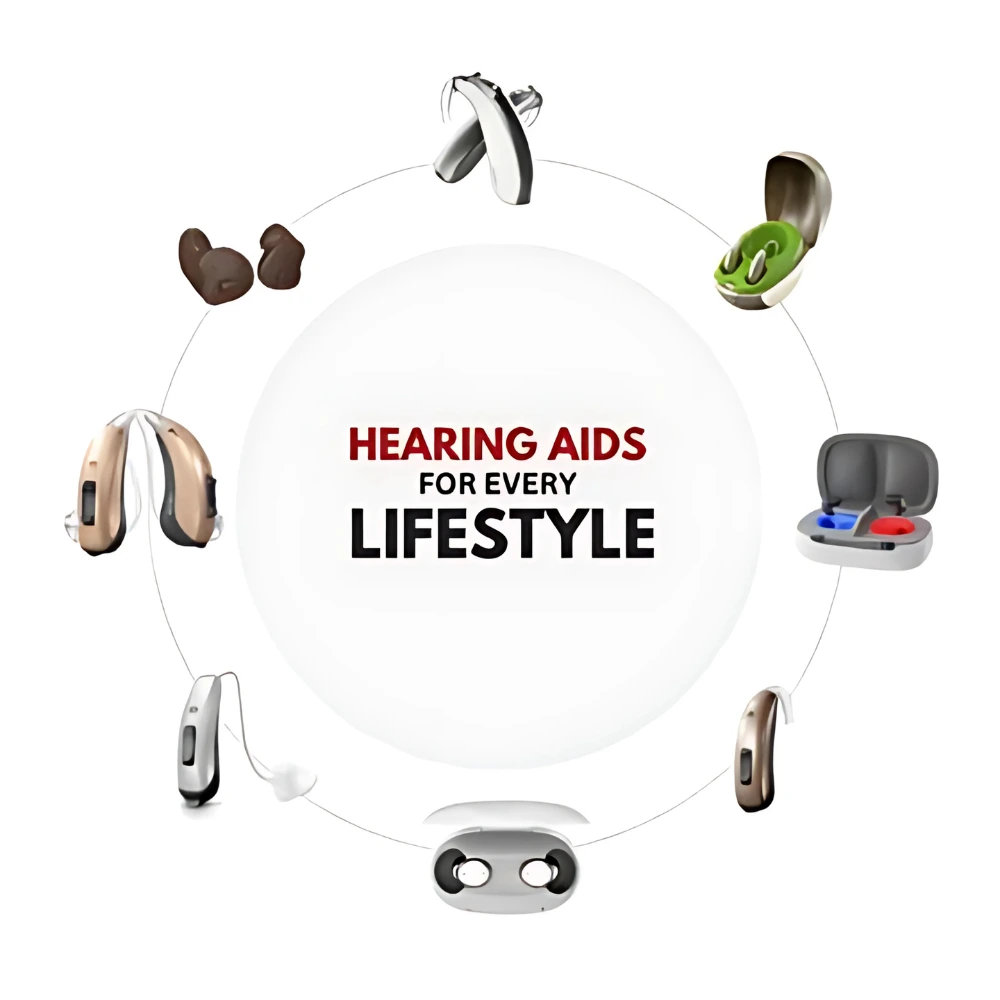Home » Hearing Loss » Types Of Hearing Loss
Understanding the Types of Hearing Loss
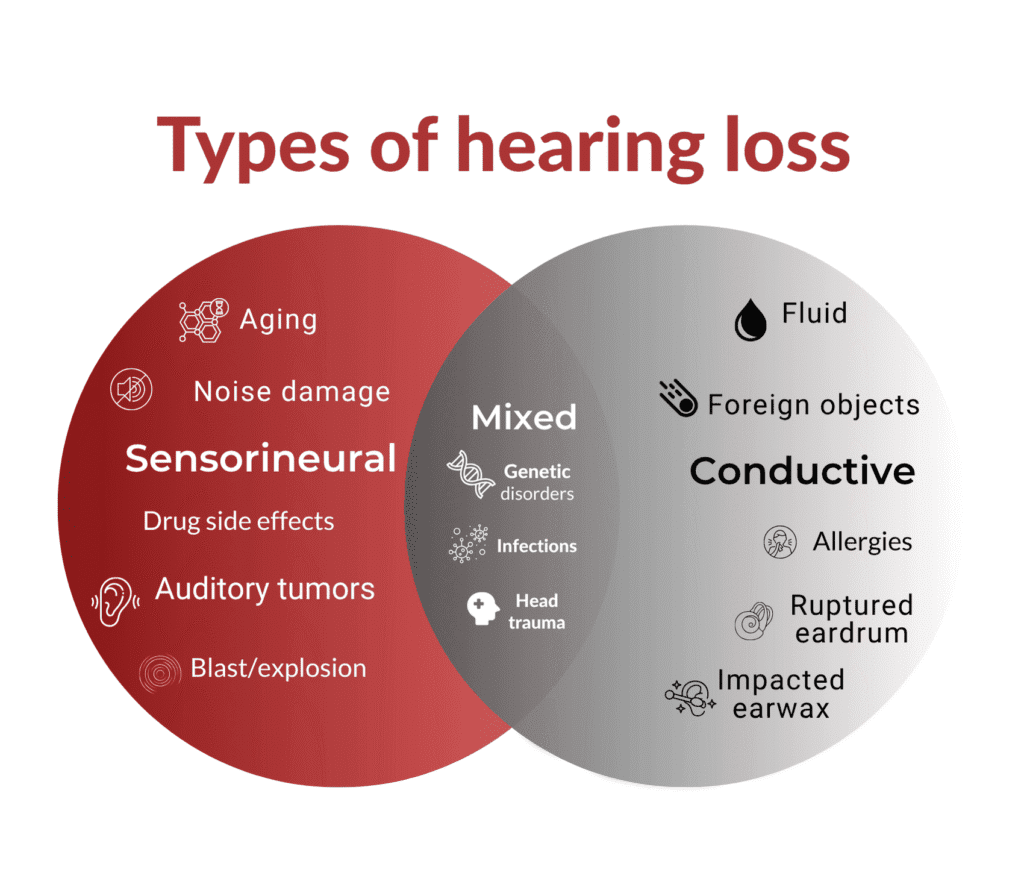
How is hearing loss classified?
- Conductive Hearing Loss: It is a type of hearing impairment in which the blockage or attenuation of sound occurs at the entrance to the inner ear. Causes may include a common infection or damage to the eardrum. It is treatable.
- Sensorineural Hearing Loss: It arises due to irreversible damage to the auditory or cochlea nerve and is the most common kind of hearing loss. It is usually permanent.
- Mixed Hearing Loss: This is a type of hearing loss where both conductive and sensorineural types are present, with the inner ear and outer/middle ear in tandem being affected.
Conductive Hearing Loss
Common causes include:
- Earwax buildup: Can clog the ear canal and reduce sound clarity.
- Ear infections: Often result in fluid buildup in the middle ear.
- Eardrum damage: Perforations from trauma or infection affect sound transmission.
- Otosclerosis: Abnormal bone growth in the middle ear.
Symptoms:
- Muffled or soft sounds
- Better hearing in quiet environments
- A feeling of fullness in the ear
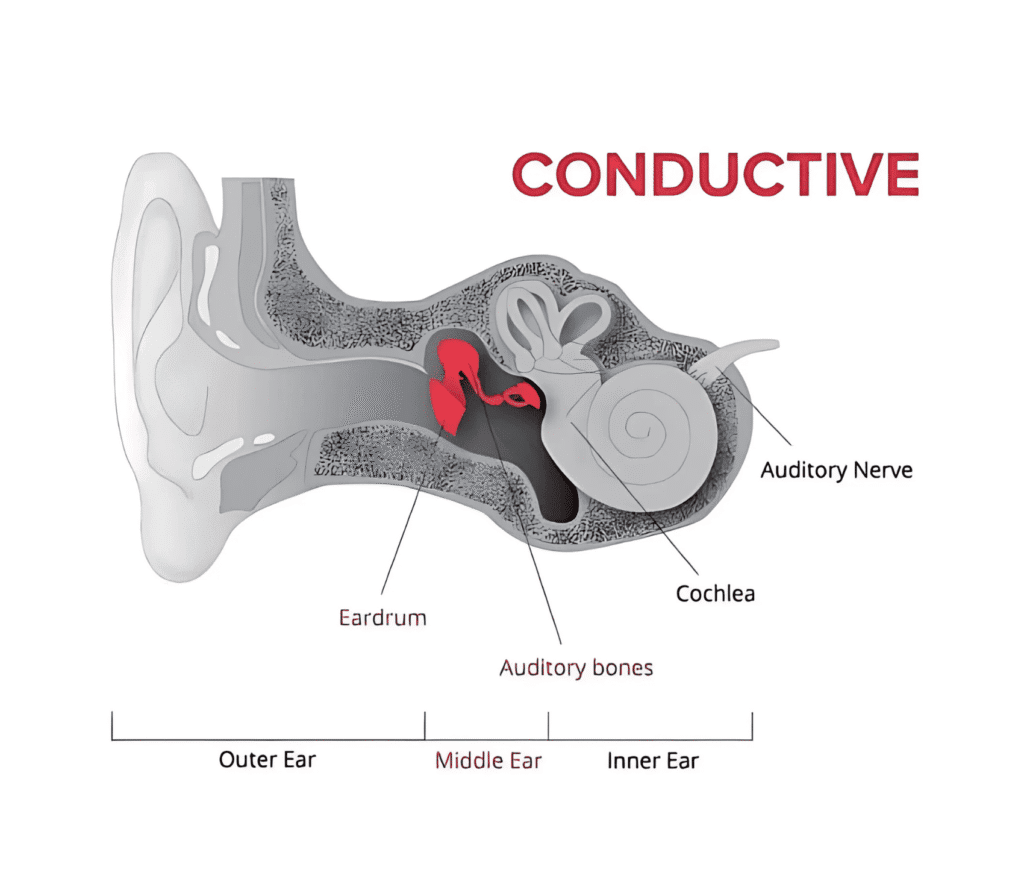
Sensorineural Hearing Loss
Causes include:
- Aging (presbycusis): Natural degeneration of inner ear hair cells
- Loud noise exposure: Damages sensory cells in the cochlea
- Head trauma or illness: Such as meningitis or autoimmune disease
- Genetics: Inherited forms of deafness
Symptoms:
- Trouble understanding speech, especially in noisy places
- Sounds may seem distorted or unclear
- Tinnitus (ringing in the ears)
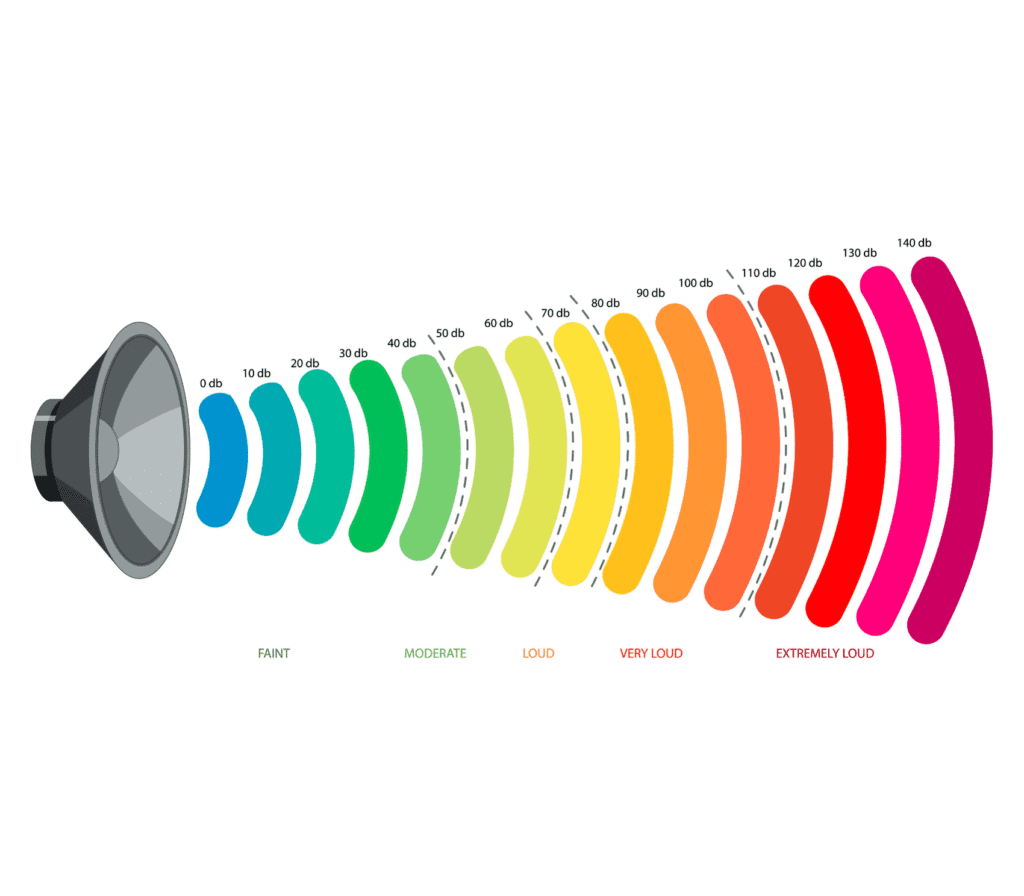
Mixed Hearing Loss
Common reasons:
- An individual with age-related hearing loss (sensorineural) develops an ear infection (conductive)
- Chronic ear infections that eventually cause nerve damage
Common reasons:
- Reduced sound clarity AND volume
- Difficulty understanding speech and detecting softer sounds
Conductive vs Sensorineural Hearing Loss: Key Differences
| Feature | Conductive | Sensorineural |
|---|---|---|
| Affected Area | Outer/Middle Ear | Inner Ear/Nerves |
| Common Causes | Wax, infections, eardrum damage | Aging, noise, genetics |
| Sound Quality | Sounds are muffled | Sounds are distorted or unclear |
| Reversibility | Often reversible | Usually permanent |
| Treatment | Medical/surgical | Hearing aids, cochlear implants |
Severity Levels: Mild, Moderate & Profound Hearing Loss/ Deafness
- Mild (26–40 dB): Difficulty hearing soft speech or distant conversations
- Moderate (41–70 dB): Trouble hearing normal speech, especially in noise
- Severe (71–90 dB): Only loud speech is understood
- Profound (>90 dB): May only hear very loud sounds or none at all
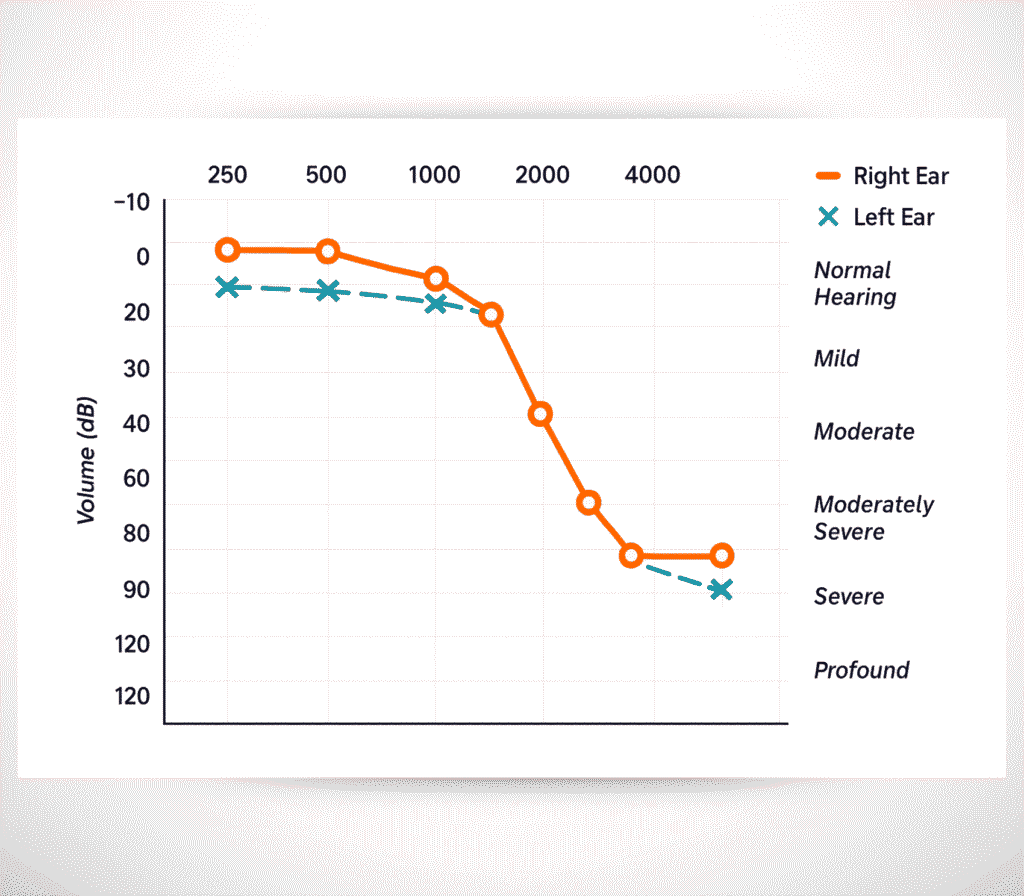
What Type of Hearing Loss Do You Have?
- Pure tone audiometry
- Tympanometry (middle ear check)
- Speech recognition testing
Learn More About Hearing Loss
- Signs and Symptoms
- Causes of Hearing Loss
- Untreated Hearing Loss
- Types of Hearing Aids
FAQs
The four main types of deafness include conductive, sensorineural, mixed hearing loss, and central auditory processing disorders. Each type affects hearing in different ways and requires distinct treatment approaches.
The most common types of hearing loss are conductive hearing loss, sensorineural hearing loss, and mixed hearing loss, depending on whether the outer, middle, or inner ear is affected.
Hearing loss refers to reduced hearing ability that ranges from mild to severe. Deafness is usually a profound or complete hearing impairment with minimal or no hearing ability.
The four levels of hearing loss/ deafness include mild (26–40 dB), moderate (41–70 dB), severe (71–90 dB), and profound (>90 dB), affecting how well a person can detect and process sound.
Moderate conductive hearing loss means sound between 41–70 dB is harder to detect due to blockages or dysfunction in the outer or middle ear. It’s often treatable through medical or surgical intervention.
Request Consultation
